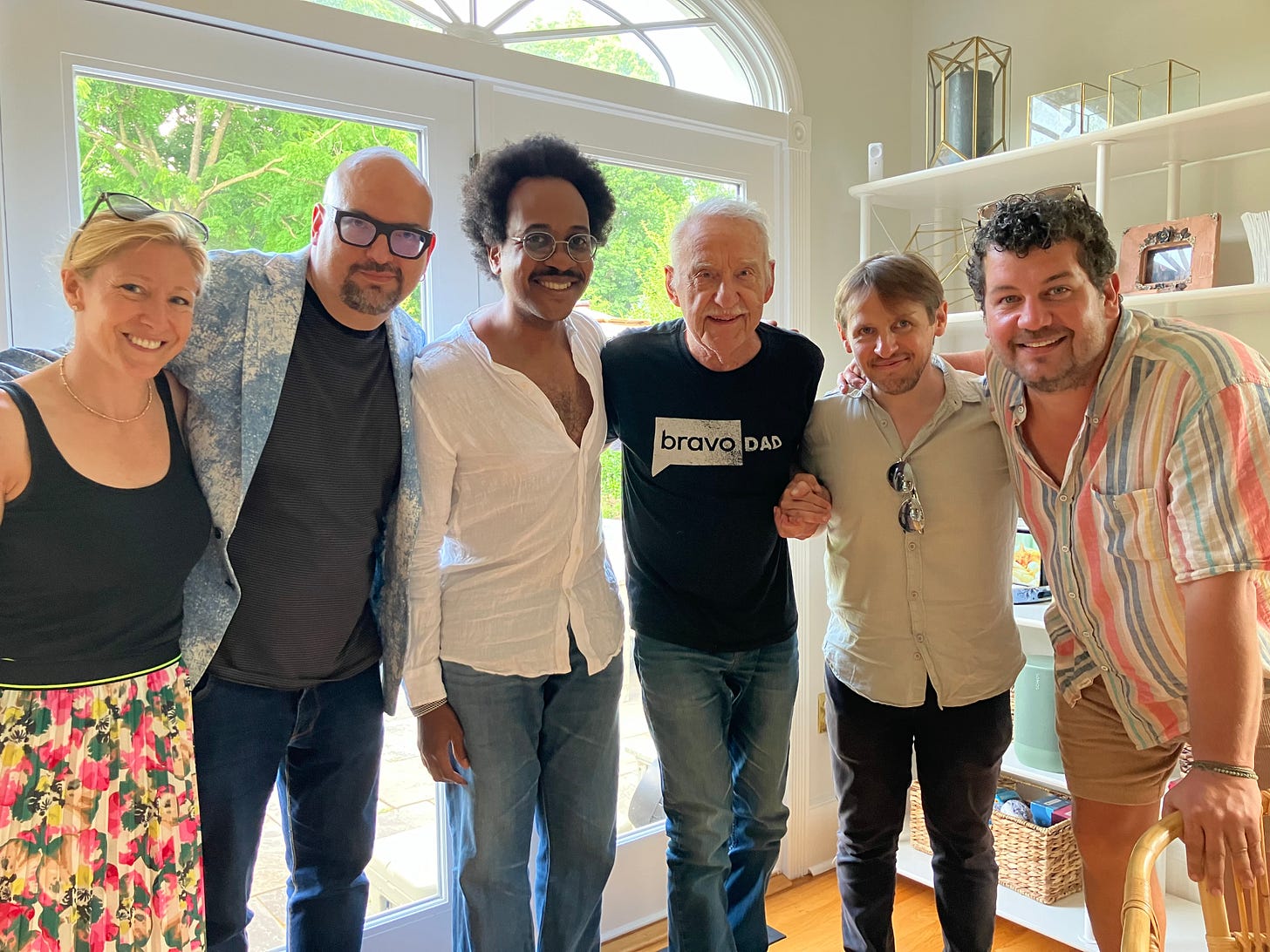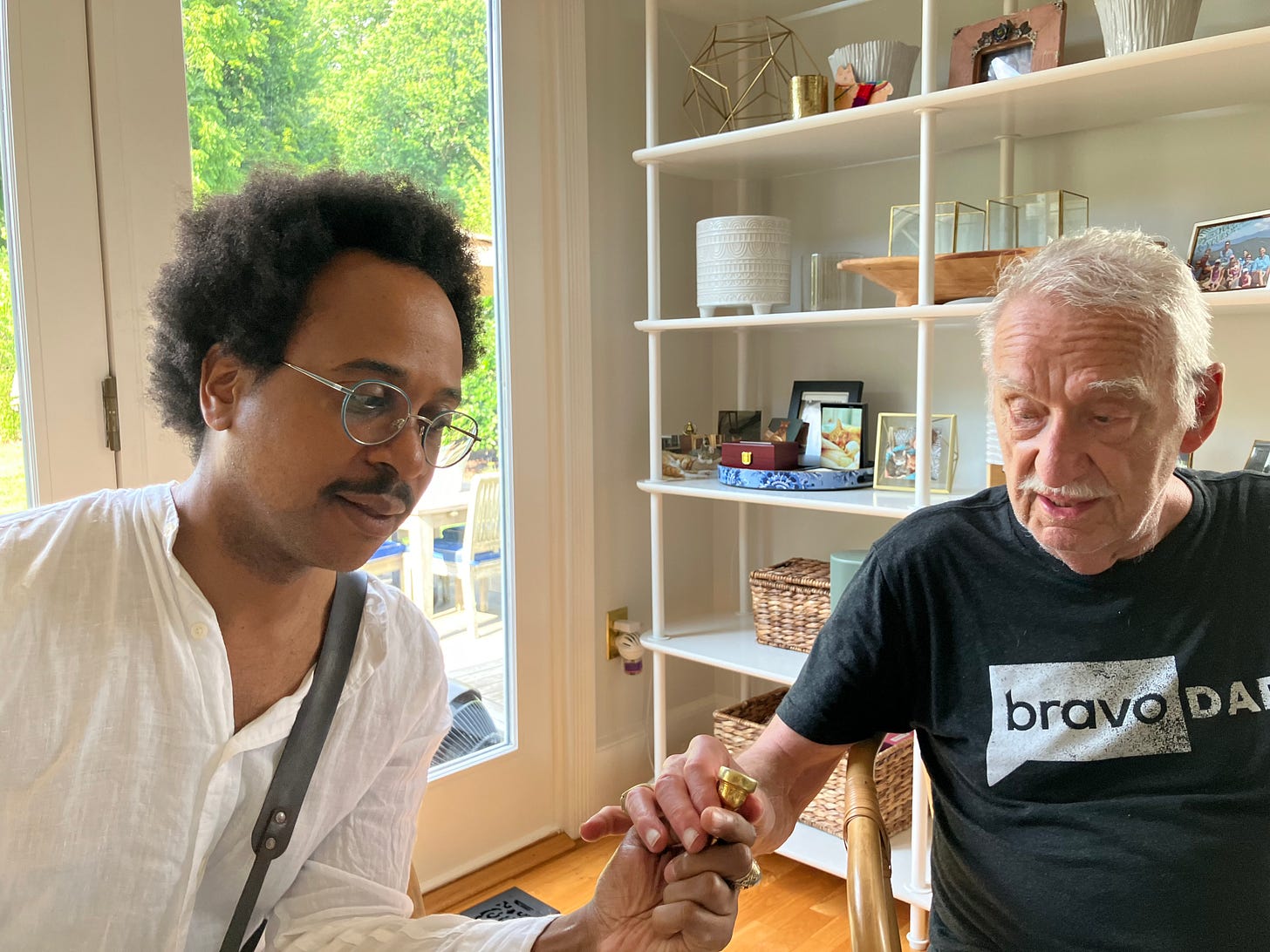TT 415: "The Mystery Song"
Ellington obscurity -- and an even more obscure piece by William Russo, with a coda from Doc Severinsen
The fabulous 1961 Steve Lacy/Don Cherry album Evidence opens with “The Mystery Song” by Duke Ellington. It’s really great, the horns moan evocatively over the fat groove of Carl Brown and Billy Higgins.
I’ve always sort of wanted to play “The Mystery Song,” but I never saw a chart or heard it anywhere else, and wasn’t sure how to even start transcribing the Lacy/Cherry performance. In his books Early Jazz and The Swing Era, Gunther Schuller praises the main tune as one of Ellington’s best.
In the internet era, one could finally easily hear the 1931 Ellington original, which was was undoubtedly something made on deadline for a specific skit at the Cotton Club.
H’mm. Are these notes the same as on the Lacy and Cherry record?
A year or two ago I came across the sheet music in an Ellington folio. Aha! This is what Lacy must have used when fashioning a quartet chart, for his recording follows the melody and bass line on the second page exactly.
I’m leading a band with soprano sax and trumpet this week at Smoke
so it was finally time for me to get something together on “The Mystery Song.” When I transcribed the Ellington original, though —
— it turned out that the actual functions of the opening harmony are totally different. The folio is in E-flat, and the tune starts on C dominant, with the melody a fifth above the bass. The recording is in D, and the tune starts on E dominant, with the melody a ninth above the bass.
I’m at a loss to explain this enormous discrepancy. However, when I first played through the piano folio version, I did notice that the harmonic storytelling in the second half was problematic, the leap to subdominant A-flat in the last 8 bars sticks out as “wrong.” On the record, there is no comparable confusion, it’s a smooth flow from start to finish.
We are going with the Ellington band chord changes this week. Sam Newsome is in the Steve Lacy chair, Jonathan Finlayson is in Don Cherry’s, and Jacob Garchik is just the person for some Ducal trombone.
1931 was an unusually lean year in Ellington’s vast recorded output. There were only six sides or so. Maybe Steve Lacy heard the 78, maybe he happened on the piano music, maybe he read about “The Mystery Song.” It was notably obscure. According to the Tom Lord Jazz Discography, it was first issued on 78 in 1931 coupled with “Moanin’” by the Mills Blue Rhythm Band — but then never reissued on LP until 1965 as part of a British LP, The Duke Steps Out. The massive, complete Ellington series on 24 French RCA LPs in the 1970s included both the master and an alternate take of the song. (This discographical data is from Mark Stryker.)
There’s an early important Steve Lacy profile in the fabulous publication The Jazz Review.
Founded by Nat Hentoff, Martin Williams, and Hsio Wen Shih in New York in 1958, The Jazz Review was the premier journal of jazz in the United States. Short-lived as it was (1958-1961), it set an enduring standard for criticism.
Gunther Schuller was part of the Jazz Review brain trust, did he write about early Ellington and “The Mystery Song?” Did young Schuller tell the world about an obscure Ellington gem with Lacy returning the pitch?
I didn’t find any early Schuller on early Ellington article yet — send me a note if you find it in The Jazz Review or anywhere else — but while perusing the files I did happen upon Hall Overton rather cattily reviewing William Russo’s Symphony no. 2, “Titans.”
Overton is a special interest of mine — indeed, I am possibly the world’s no. 1 Hall Overton expert — and somehow I had never seen this review! As far as I know, this is the only time Overton was a published critic.
The page isn’t clear about the details, but at the time there was no commercial recording of the Russo symphony. Unless he had access to a private tape, Overton must have attended the premiere at the New York Philharmonic with Leonard Bernstein conducting and Maynard Ferguson playing the high notes in the last movement.
A later rendition is on YouTube. A note from the uploader:
This performance is a better recording [then the archival NY Phil with Bernstein/Ferguson] and features the trumpeter Bud Brisbois and the Chicago Symphony Orchestra conducted by Seiji Ozawa from a performance recorded on July 30, 1967.
I’ve listened casually twice. As Overton suggests, the work seems a bit neither here nor there. It would be better as a film score than as a symphony. The trumpet high-note extravaganza towards the end (starts 17 minutes in) is pretty awesome, though. Overton joked about that part but for me that’s easily the distinctive moment.
Ferguson himself can be heard on the relevant excerpt from the 1959 premiere. The video has 32,000 views. (I agree that the Brisbois/Ozawa is better, not that the orchestra is perfect in either instance.)
Speaking of high trumpet notes, part of Mark Morris’s The Look of Love band got to hang out with the legendary Doc Severinsen last weekend thanks to a family connection, for Blaire Reinhard is Doc’s granddaughter. Doc turned 97 on Sunday.
Blaire, me, Jonathan Finlayson, Doc, Vinnie Sperrazza, Clinton Curtis:
Jonathan showed Doc his mouthpiece:









“Kentonish brass grunts…” lol
As to Hall Overton, seen : https://www.wnyc.org/jazzloftthemovie/ ???
Astounding on several levels... (Carla Bley/Steve Swallow...MONK! and much more!